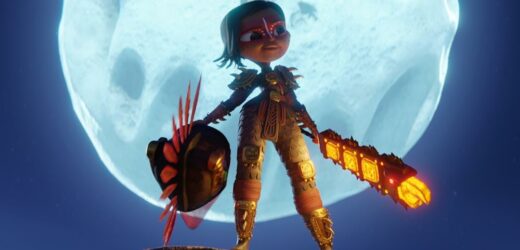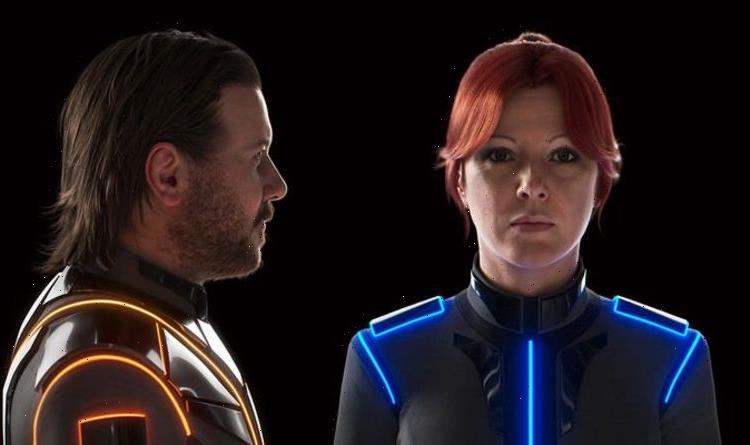In Jorge Gutierrez’s Netflix fantasy epic “Maya and the Three,” audiences are transported to a lush world of intricate design and carefully crafted mythology. The series, which dropped Oct. 22, follows Eagle warrior princess Maya of Teca (voiced by Zoe Saldana) as she teams up with three warriors from neighboring kingdoms to trek into the underworld and battle against sinister gods.
Drawing influence from Mesoamerican history, art and culture, Gutierrez and his creative team developed a striking fantasy world to suit their ambitious story. Four primary locations serve as anchors: the sprawling Kingdom of Teca, the magical Luna Island, the mysterious Jungle Lands and the towering Golden Mountains. Each draw from different cultures themselves: Aztec, Caribbean, Mayan and Incan civilizations, respectively.
In creating “Maya,” Gutierrez and cultural consultant Sandra Equihua consciously aimed to turn the Mexican history they’d learned in school on its head. This is a history Gutierrez says is “full of warrior women that don’t get the credit.” Maya’s collection of friends — Rooster Wizard Rico (Allen Maldonado), Skull Archer Chimi (Stephanie Beatriz) and Puma Barbarian Picchu (Gabriel Iglesias) — serve as integral parts of her journey. In fact, the experience Maya has leaving her homeland and encountering new allies was, in part, inspired by Gutierrez’s own experiences after leaving Mexico to attend CalArts.
“I started meeting people from Latin America, and I started having friends from Puerto Rico and Peru, Argentina and Central America, Guatemala, El Salvador,” he says. “I became a better artist when I heard their experiences and their stories.”

As for the kingdoms themselves, rather than true-to-life representations, production designer Paul Sullivan describes using Mesoamerican cultures “like a foundation” and allowing the “association of shape, symbolism and iconography define the base of all our design.”
Sullivan notes, for instance, Mayan astrologers’ discovery of the golden mean. “They use the golden mean in a lot of their architecture. It was in the proportions of their doorways, it was in the layouts of their cities,” he says, explaining that the golden mean then became a “felt-not-seen inspiration” for the Mayan-inspired Jungle Lands.
Visual development artist Paige Woodward adds that the research of the creative team provided a framework through which to craft these core locations. “I remember distinctly, there was a page of different metals and golds,” Woodward says of the design bible she received upon joining the production. “That immediately ingrained that mindset of the uniqueness that went into having to paint each location.”
Maya’s trek into the sinister underworld found inspiration from this research as well. Gutierrez and Equihua note an ancient Mayan text, the Popol Vuh, as a particular example. “There’s these amazing twins that go into the underworld to retrieve the bones of their father and their uncles. And I started realizing, wait, that’s Orpheus too,” says Gutierrez. “The myth of a hero going to the underworld exists everywhere in the world.”
The gods of the underworld exist in stark contrast with their human adversaries. “We still wanted to keep them scary and sort of inhuman” says art director Gerald de Jesus. “These do not look like normal people. The proportions on these characters are ginormous.”
A personal favorite underworld design of Gutierrez is the monstrous god of war and primary antagonist, Lord Mictlan (Alfred Molina). “I love ancient gods, I love death, I love war, I love heavy metal. The pressure was: I need all that in one design.”
Featuring a total of 666 skulls, according to Gutierrez, Mictlan’s most notable feature may be his head, which often separates into two distinct part as he speaks.
“War has two heads that are constantly clashing because war is, of course, two sides opposing each other,” Gutierrez says.

The series is rich with these details, references and winks. De Jesus hints at “really cool nods to a viewer that will pause the screen and stare.” In fact, fans of Gutierrez are treated to several Easter eggs from his previous work, including cameos from the original El Tigre and several gods from “The Book of Life.”
Guided by a distinct style, “Maya and the Three“ brings to life a vividly detailed world to match the grand scope of its story.
“We like to say that it was like our daughter,” Equihua says of the show. “I just really hope that it really gets into people’s subconscious and it stays with them for a long time.”
Source: Read Full Article

